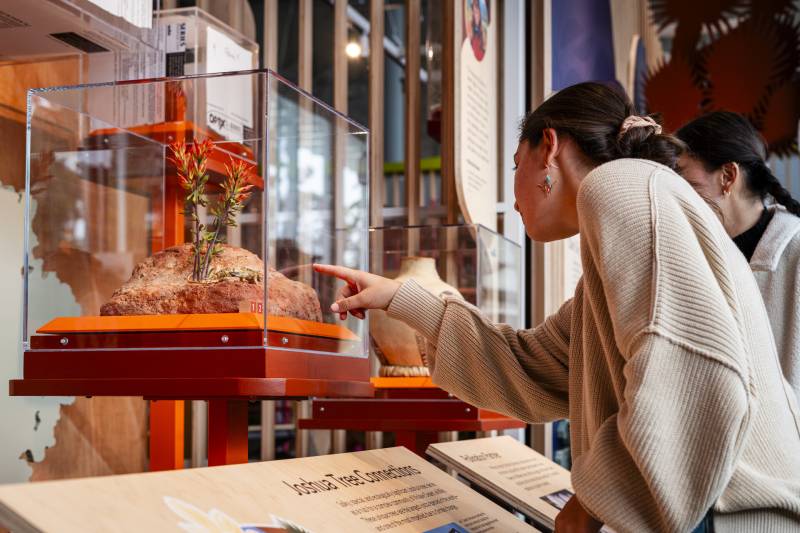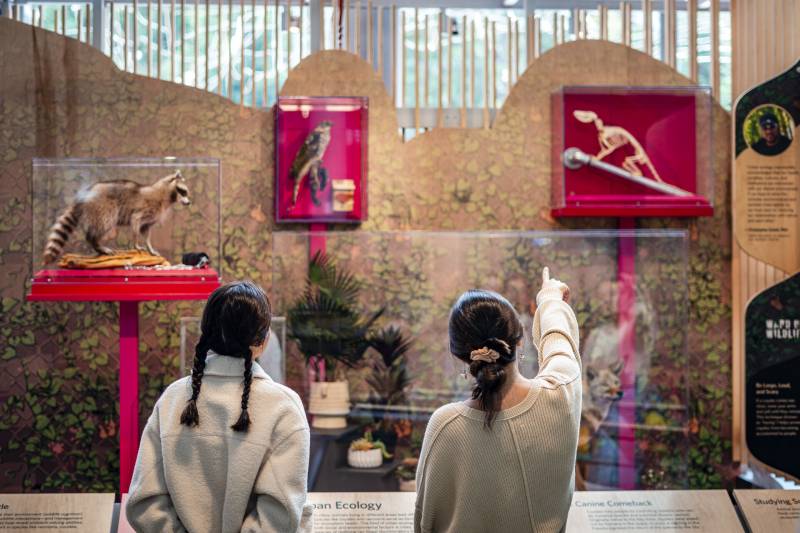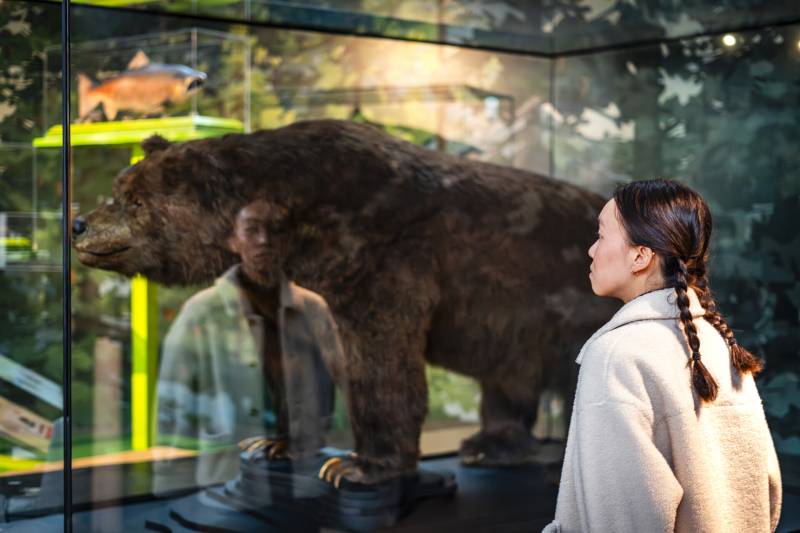From the parched landscape of The Mojave Desert to the expansive coastline of Monterey Bay, California is one of the most biologically diverse places on Earth.
Visitors to the California Academy of Sciences in San Francisco’s Golden Gate Park can now taste much of what the state offers in one place.
Cal Academy has a newly minted permanent exhibit named California: State of Nature, which celebrates California’s unique ecosystems: deserts, forests, coasts, and cities. The exhibit opened to the public this week and is located adjacent to the iconic Osher Rainforest dome.

“We really wanted it to be vibrant and colorful to reflect those varied and diverse elements of California,” said Julia Louie, Cal Academy’s manager of exhibit design. The space is a culmination of a two-year planning and collaboration between the museum, its partner organizations, and several of California’s Indigenous communities.
The museum said this is its first major exhibition developed in collaboration with Indigenous advisors. “Whenever I participate or consult or engage with the public, I attempt to honor truth, history, and my ancestors to the best of my ability,” said Kanyon Sayers-Roods, who is Costanoan Ohlone-Mutsun and Chumash and presented at an opening ceremony on May 23.


